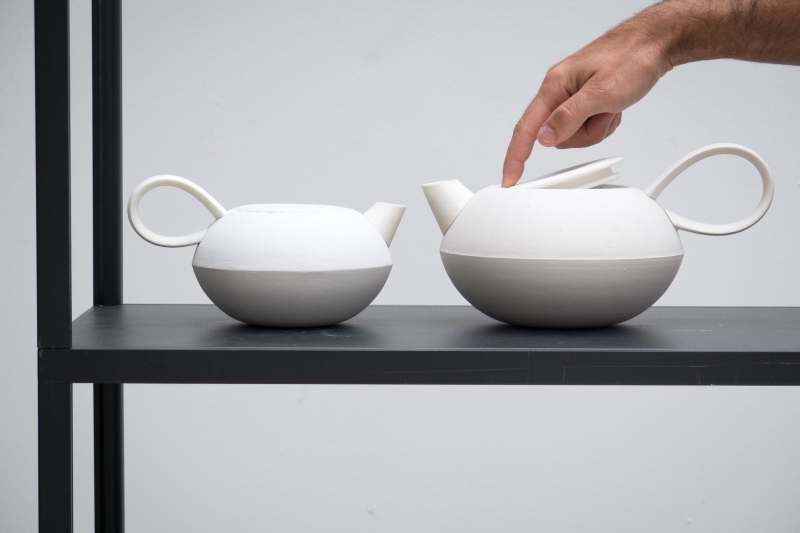Interview: Stefan Diez
German product designer Stefan Diez designs a wide range of objects from his Munich studio and is known for creating covetable, accessible designs. For 2016/ he worked together with Kawazoe Seizan Pottery, making a collection of 26 porcelain items. Here he explains the ambitions behind the collection and his design process.
- What did you think when you first saw the porcelain made in Arita?
I first looked at the shapes, the materiality and the variety of design objects being produced in Arita. The porcelain ranged from very high-end tea services to basic everyday objects. Craftsmanship plays a role there, as does tradition. Do both go hand in hand? Yes, but yet, not always. Especially when you consider that porcelain should also be awakening interest in younger generations. I specifically looked at the contemporary porcelain that was being produced in Arita and found it to be lacking any connection with the zeitgeist. If detached from any sort of expectation, Arita porcelain is basically Japanese porcelain at its best: a timeless material. Perhaps it was time, I thought, to experiment with this material in relation to international table and eating habits.
- The 2016/ collection includes many pieces of tableware and your collection is especially large: 26 items. Why did you decide to produce so many different pieces?
The collection covers almost every aspect of serving food. It is not surprising that so many manufacturers produce tableware as these are objects of essential and daily use; a mass product.
- Are there any specific design details that you concentrated on?
I took out the stand or ‘foot’ that is a common feature in Japanese tableware and that allowed for the pieces to be stackable. They are largely quiet designs, intended to be unobtrusive on a table. There are some louder pieces, such as the teapot and the cup itself, which have the most significant details and have defined the rest of the set. The collection works like an orchestra, where every instrument plays an important part and the group is more powerful than the individual. Just like in music, industrial design has to find a theme, a narrative, and give meaning to every single item.
- What is your characteristic approach to design?
I always ask the question, ‘where should I start?’ To let an idea grow, you have to begin with one thing at a time. So in this instance I began by designing the cup because the cup has the most uses: for coffee, for tea, for soup… The cups then gave form to the bowls, and the bowls gave shape to the plates. Together, the pieces created a pragmatic and clear reflection on simplicity. The cup was the most difficult task as it has a perfectly round shape that had to be paired to another element. The rules of proportion were needed to create a harmony between these shapes. The cup and its handle dictated the shape for the teapot, the strongest item of the set.
- Do you have design philosophy?
I don’t write manifestos. But I always retain the possibility of being surprised and to let others be surprised by what we do.
- What were your lasting impressions of the 2016/ project?
Of a deep and mutual respect between the people that I have met and worked with.










